Russian fortresses on the protection of the Kazakhs
October 10 The 1731 of the year with the signing of a certificate on the voluntary entry of Western Kazakhstan (Younger Zhuz) into the Russian state for many centuries, until the notorious Belovezhskaya meeting, determined the unity and common fate of the Kazakhs with the Russian and other peoples of Russia.
This event contributed to the rise of the economy and culture of Kazakhstan, the cessation of feudal civil strife there. It also ensured the external security of the Kazakh lands and rescued the Kazakhs from the enslavement of the Dzungarian military feudal state and the Manchu-Chinese empire of Qing. The Kazakh Khanate was formed at the end of the XV century. It was divided into three zhuz (regions): Elder (Semirechye), Medium (Central, Northern and partially East. Kazakhstan) and Minor (Western Kazakhstan). In the 1726 year, in an atmosphere of internecine struggle and intensified aggression against Kazakhstan by Dzungaria, one of the Kazakh rulers, Khan Abdulhayr, on behalf of the Younger Zhuz, applied to the Russian government for admission to citizenship. In 1731, this request was granted. In the 30-40 of the 18th century, most of the Middle Zhuz and some lands of the Elder joined Russia. In the sixties of the XIX century. Kazakhstan’s voluntary entry into the Russian state has ended.
An important role in the protection of the Kazakh cattle-breeding tribes and their possessions was played in 40 — 60 of the 18th century: Russian military defensive points, especially the Yamyshevskaya fortress (founded in 1716), Zhelezinskaya (in 1717), Semipalatinsk (in 1718) .), Ust-Kamenogorsk (in 1720), Bukhtarma (in 1761) and others. One of the main tasks of the border fortifications was to prevent the conquest of the Russian and Kazakh lands by the Dzungar Khanate, and later by the Chinas China. The Kazakhs were given all possible support in the fight against foreign invasions. The fortresses were at the same time the supporting bases of the Russian state for the expansion of trade relations with the nomads and the spread of Russian influence among them. Further construction of military defensive points in the southwestern part of Siberia, at the junction of Russia and Kazakhstan, was largely determined by the state of Russian-Dzungarian and Kazakh-Dzungarian relations, as well as by the situation in the areas bordering on China. It should be noted that the Chinese authorities sought to exacerbate the situation in this region of Central Asia with the help of all sorts of intrigues and to prevent rapprochement between Russia and Dzungaria.
The most devastating raids on the Kazakh lands were made by the troops of the Dzungarian juntai-ji (Khan) Galdan-Tseren in 1738-1741. Having invaded the Middle Zhuz and made a pogrom in the Kazakh auls, which was terrible in its consequences, they pursued the fleeing inhabitants to the Orsk fortress itself. Decisive actions of the Russian military administration in defense of the Kazakhs, who accepted Russian citizenship, forced the Dzungars to retreat. After that, the requirements for the border service were significantly increased in terms of more timely information and notification of all aggressive actions of the Dzungar troops. Thus, in the prescription of the head of the Siberian provincial office P. Buturlin, the commandants of the fortified border points indicated:
In the forties of the 18th century, Siberian border authorities took steps to further strengthen the defensive lines. For example, on the western bank of the Irtysh, the construction of outposts of Bolsheretsky, Inberiysky, Beterinsky, somewhat later than Vorovskiy, Verblyuzhsky and others began. In the autumn of 1741, Cossack patrols were sent from Tara to the west, and then the garrison was strengthened in the city itself.
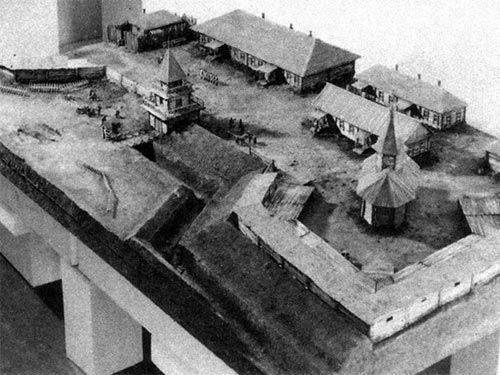
20 May 1742, the Senate made a special decision on measures to protect the Kazakh population and the defense of the border areas from the Dzungars. It was envisaged, in particular, to increase the number of troops at all border points, which should have been "subjects of the khans and sultans with their people, how much can be protected." In the same year, a special embassy was sent to Dzungaria with the task of explaining to the Khan authorities the current situation in Kazakhstan in connection with its entry into the Russian state. It was also prescribed to declare Galdan-Tseren, "so that, being known about the citizenship of the Kazakhs, he would not cause more ruin to them and not send his troops to them." The result was the release from captivity of the Russian subject Sultan A6lay captured before this Dzungars during their invasion of the Middle Juz at the beginning of 1742 of the year. An agreement was reached on some restriction of the Dzungar claims against the Kazakhs of this zhuz (the Kazakh population was exempted from paying tribute to the Dzungarian khan).
However, the situation in the regions bordering Dzungaria remained restless. Western Mongols, the Oirats, who arrived there in 1744, reported on the intentions of Galdan-Tseren to send troops to Ust-Kamenogorsk, Semipalatinsk fortresses and to Kolyvan plants. Indeed, a ruinous raid by the Oirat detachments on the Altai mines soon occurred. Militant neighbors knew about the small number of Russian troops in the border areas, which explains their bold attacks.
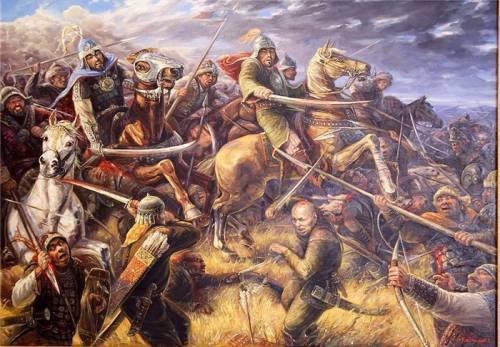
Given the current situation, the Russian government ordered the head of the Orenburg Commission, I.I. Neplyuevu, send to Siberia "at the most extreme speed" three dragoon regiments. They were transferred to border areas and other military units, and measures were taken to strengthen the fortresses on the Upper Irtysh. The overall command of the frontier troops was entrusted to Major General I.V. Kinderman. The measures taken contributed to ensuring the security of Western Siberia and Kazakhstan, and opened up new opportunities for the development of economic ties and trade between Kazakhs and Russians. This was well understood by the Kazakh population. One of the sultans of the Middle Zhuz, Barak, during negotiations with the Dzungarian ambassadors who tried to turn him against Russia, said that there were no offenses and noises from the construction of Russian fortresses and from the Russian people, but only benefit.
It is known that the protection of the Kazakhs from the Jungar aggression was carried out by the Russian government without the use of military force. Both sides, Russia and Dzungaria, avoided open armed conflicts, preferring to settle the often arising disputes through peaceful negotiations. The Dzungar rulers themselves sometimes even sought the support of the Russian authorities and their help in connection with the growing threat from Qing China.
An important role in strengthening the position of Russia on the Central Asian borders was played by the successful economic development by the Russian people of Southern Siberia, including Altai and the Irtysh region.
The significance of Russian fortresses in the development of Russian-Kazakh relations and in protecting the Kazakhs from external invasions increased especially after the defeat of the Dzungarian state by the Qing forces, who at the beginning of 1755, by order of Emperor Qianlong within two Chinese armies, invaded the Khanate. The Chinese mercilessly dealt with the Dzungars, "betraying them to fire and sword." Many prisoners sold into slavery. Several thousand Dzungarian families fled to the Volga to their tribesmen - the Volga Kalmyks.
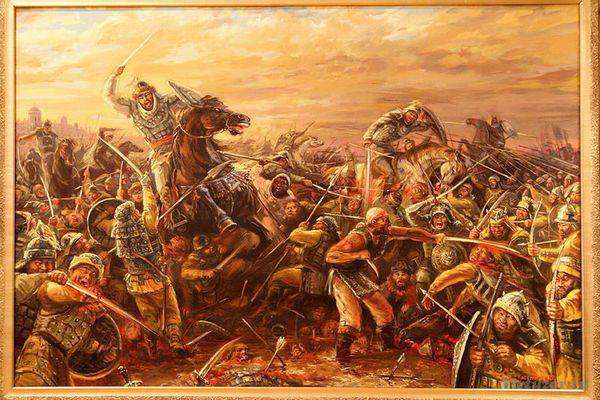
The Russian government took measures to prevent the Chinese from entering the border areas where Kazakh and other tribes were roaming. At this critical moment, the defense of the Siberian mining enterprises and the protection of citizens of Russia, including the Kazakhs, was entrusted to the Siberian governor V.A. Myatleva. Under his leadership, additional fortified points were built, new officers were recruited to serve in the military guard patrol service. In order to replenish the garrisons of the South-Siberian fortresses in 1763-1764, several horse and foot troops from the Old Believers were formed. They sent them to the disposal of the commandant of Ust-Kamenogorsk fortress for service. A significant number of Don Cossacks and up to 150 exiled Cossacks were transferred to the Siberian defensive line.
Part of the oppressed Chinese Dzungar was forced to flee to the Russian border fortifications. A lot of them, coming to Yamyshevskaya, Semipalatinsk, Ust-Kamenogorsk and other fortresses and redoubts, sought to gain Russian citizenship and, thus, to avoid the bloody reprisals of troops and clashes with the Kazakh militia. At that time, many Kazakhs were fully justified in their desire to avenge the Dzungars because of robbery in previous years.
Voluntary acceptance of a part of the Oirat tribes of Russian citizenship occurred before the defeat of Dzungaria, as early as the forties of the 18th century. Now they flocked to the border fortifications. In July and September 1756, the Siberian governor V.A. Myatlev informed the Foreign Affairs Collegium that a large number of the Dzungars pursued by the Chinese had sought refuge in Russian steppe fortifications.
Ust-Kamenogorsk, Semipalatinsk, Yamysheaskaya and other fortresses became the points at which, as a rule, the Dzungars took the oath of Russian citizenship. 7 August 1758, Siberian Governor-General F.I. Soymonov told the State Collegium about taking Kalmyk refugees among the 5187 people and about twenty thousand different cattle under the high sovereign’s hand. Some of these people were settled in border fortresses. At the same time, they came to the Semipalatinsk fortress to ask for the Russian citizenship of 6 from the Tauta (Kalmyk) khans: Zaman, Manut, Sheereng, Uryanhai, Norbo-Ciryk and Lousant.
Even Amursana, who dreamed of being the sole ruler of the Dzungarian Khanate, suffered a series of defeats, 27 June 1757, fled with his people to the Semipalatinsk fortress and asked for refuge, fearing reprisals from the Chinese. His request was granted.
Tsins repeatedly attempted to punish the Kalmyks who voluntarily accepted Russian citizenship. Thus, in July 1758, a detachment of Chinese suddenly appeared under the walls of the Ust-Kamenogorsk fortress, who, churning weapons, solicited the return of Dzhungar refugees. The commandants of the fortresses of such demands tsin answered with a decisive refusal. Thus, the Dzungars, who not long ago demanded the destruction of the fortresses on the Eastern border of Russia and Kazakhstan, after the aggression of the Qing Empire, were forced to seek salvation outside their walls. The aspiration of many peoples of Central Asia, in particular the Dzungars, to accept Russian citizenship caused opposition from the Chinese government, which organized pressure and tried to intimidate those who intended to go under the auspices of Russia.
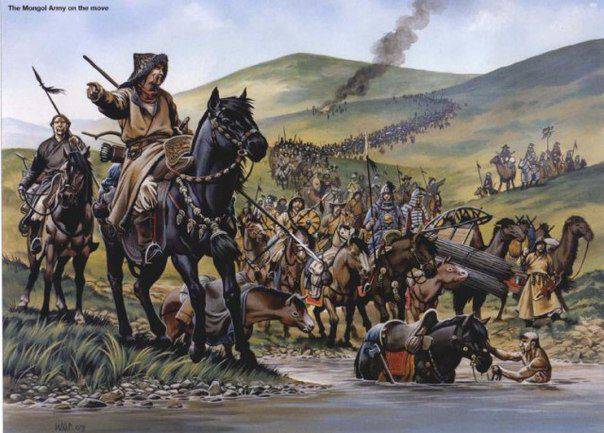
In the middle of 1758, the once-powerful Central Asian state of Dzungaria ceased to exist. It was forcibly turned into a Chinese imperial governorship - Xinjiang (new frontier), aimed primarily against Kazakhstan. It is noteworthy that the Oirat (Dzungarian) state, which blocked the way of the Manchu-Chinese expansion in the north-west of Central Asia, was literally wiped out by the conquerors from the face of the earth. This kind of cruelty is not often met in stories humanity, although the Qing government persistently tried to present the defeat of the Dzungarian Khanate as a peaceful action against the rioters.
At that time, the Kazakhs did not have sufficient force to organize repulse to the Manchu-Chinese armies, although there were cases when Kazakh militia tried to organize resistance to the aggressors, but were defeated. Meanwhile, the Qing power, having taken Dzungaria and East Turkestan into its hands, sought not only to keep these lands under its power, but also to push the Kazakhs away from Xinjiang. There was also a real threat to the Russian possessions in the Altai. All this gave rise to a series of measures by the Russian government to further strengthen the defense of a vast region.
In 1760, the commandants of the Upper Irtysh and other fortifications were ordered to take the Russian troops from Ust-Kamenogorsk fortress to Lake Teletskoye inclusive. In 1763, Lieutenant-General I.I. was sent to Western Siberia to execute this order. Springer He had to solve on the spot issues of protecting the eastern possessions of Russia from possible invasions of the Chinese. In the same year, the Bukhtarma fortress was founded at the mouth of the river Bukhtarma, which completed the creation of the Irtysh defensive line. It, like other defensive lines in the south of Siberia, also included Russian agricultural settlements, which created favorable conditions for economic activity, both Russians and Kazakhs.
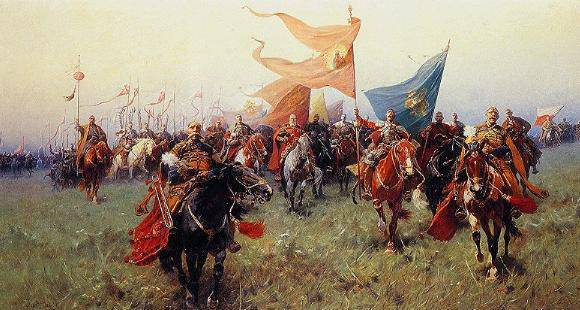
In conclusion, it should be noted that the Yamyshevskaya, Ust-Kamenogorsk, Semipalatinsk, Bukhtarma and other Russian military defensive points, built during the development of the south-western regions of Siberia in the 18th century, played an important role in protecting the Kazakhs from seizing Dzungaria and then Ching China . The advantage of their location, the presence of artillery and regular military units forced aggressive neighbors to refrain from direct hostilities in border areas.
But the defensive points contributed to the acceleration of the voluntary entry of Kazakhstan into Russia - a historical process that was important for the quiet life and development of the Kazakh people.
Sources:
Zlatkin I. History of the Dzungarian Khanate 1635-1758. M .: Science, 1983. C. 235-241.
Gurevich B. International Relations in Central Asia in the XVII - First Half of the XIX Centuries M., Science, 1979, p. 76-78.
Z. Kasymbaev. To the 250 anniversary of the voluntary entry of Kazakhstan into Russia // Military-Historical Journal. 1981. No.1. C. 71-76.
Toropitsyn I.V.N.Tatischev and I.I. Neplyuev: two approaches to the development of the Russian-Kazakh border trade. 1744 g. // Historical archive. 2009. No. 1. C. 188-198.
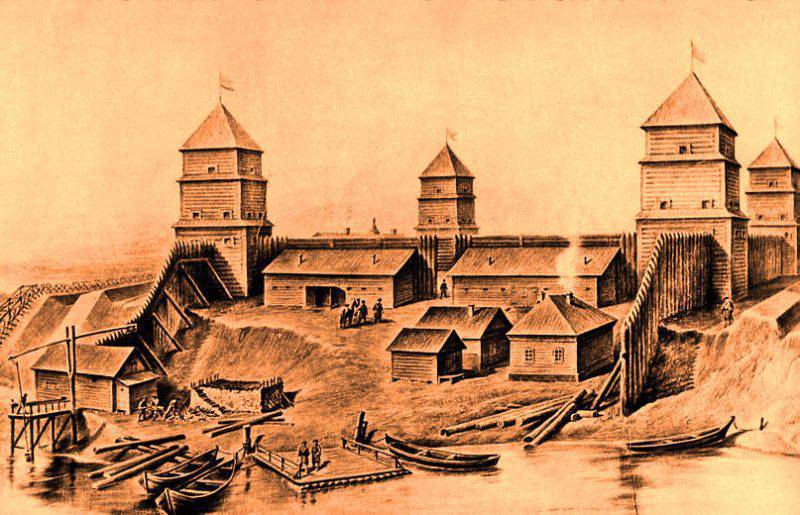
Information